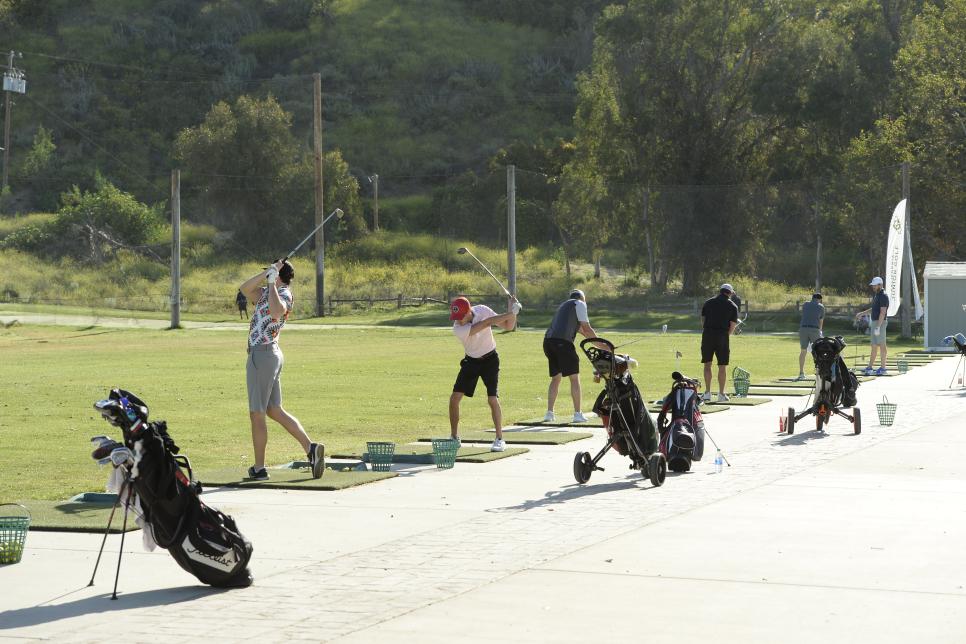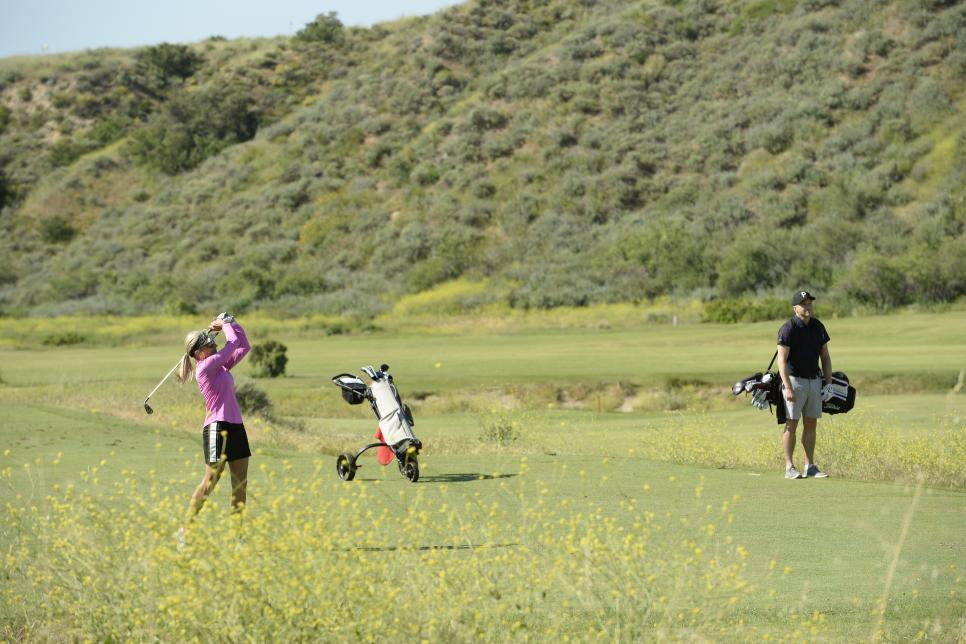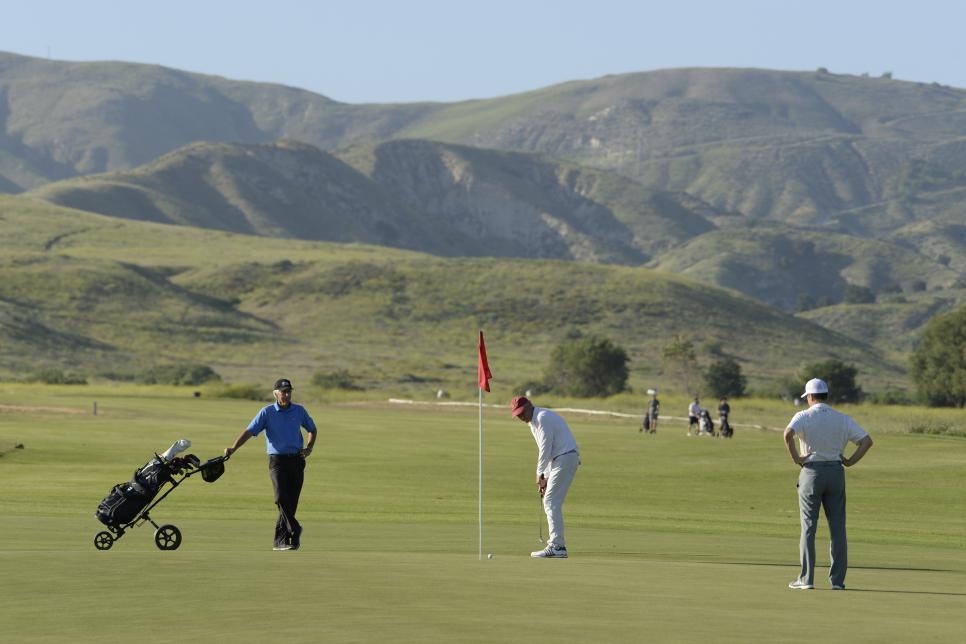Beginner's Golf Guide
So you got your first set of clubs? Here are seven things you should know

J.D. Cuban
So you finally got your first set of clubs–or your first set from this decade–and you’re excited to start working on your game. Aside from taking a lesson, there are a few things you should know to help you practice smarter and play better. We spoke with two of Golf Digest’s Best Young Teachers, Molly Braid and Justin Klemballa, to create a beginner’s golf guide that will improve your performance and increase your confidence.
Set yourself up for success and find out the seven things every golfer should know Some of these might even surprise the seasoned veterans.
1. Your grip is more than just hand placement
Getting your hands set properly can feel a bit awkward at first, but one key aspect of the grip that can significantly impact your feel and consistency is grip pressure—how hard you hold the club. “The number one fault I see a lot of beginner golfers make is grip pressure,” Klemballa says, “Specifically holding the club too tight.”
Welcome to Golf
10 things every beginning golfer should know
Great players are able to feel the weight of the club around them at all times, Klemballa says. If you grip the club too tightly, you won’t have this awareness. Being mindful of grip pressure—especially on nerve-wracking shots—is a key every golfer can use.

J.D. Cuban
2. Your swing doesn’t change, but your ball position should
It might feel like your swing changes as your clubs get longer, but Klemballa says that’s probably just because your distance from the ball is increasing. While your swing doesn’t change, one thing that should be adjusted is your ball position.
Klemballa says the ball should start in the middle of your stance and move forward as your clubs get longer. To find the proper positioning for each club, use Klemballa’s step drill. On iron shots, take half a step left and half a step right. For fairway woods or hybrids, take a third of a step with your lead foot and two-thirds of a step with your trail foot. Lastly, with your driver, take a small step towards your target and a big step back.
3. Know how to properly practice your alignment
Alignment sticks are great practice tools, but Braid says they are often used incorrectly and not just by beginners. Many golfers make the mistake of aiming their alignment rod directly at the target. But, it should actually aim slightly left of your target (for right-handed golfers), Braid says.
“Your clubface should always aim where you want the ball to start,” Braid says, “and because golf is a side-on sport, your body-line will be parallel, or just left of that (for right-handed golfers).”
Braid also says to keep in mind that practicing your alignment is one of the hardest things to self-manage, so getting help from a friend is always a good idea.

J.D. Cuban
4. Keep your swing thoughts simple
Swing thoughts are unique to every player, but when nerves set in, it’s easy for that comforting checklist to go out the window. If your thoughts start to run wild, Braid says thinking about your tempo is a great place to start. To find your tempo, take three practice swings in a row that are congruent with each other. The third will be your best fit, Braid says.
Klemballa also says that a big issue beginners run into is getting too caught up with impact. Overthinking impact can cause golfers to unintentionally end their swing at the ball, resulting in less speed and consistency through impact. Klemballa says an easy fix is to focus on making a complete finish. Think about swinging through the ball instead of at the ball, Klemballa says.
5. The swing is more than hands and arms
Beginners will sometimes keep their torso, hips and lower body still or stiff when making a swing. Braid says this compensation is common among newer golfers because they don’t understand basic swing mechanics yet.
While the hands and arms bring the club up and down, it’s the body’s responsibility to move the club around you, Braid says. Keep this in mind and rehearse your swing without a club. Notice how your chest and hips rotate. Feel your weight load and shift in your legs as you swing back and through. This basic understanding of the swing should help you free up your body and feel more athletic over the ball.

J.D. Cuban
6. The key to playing better is playing more
While the range is great, Klemballa says the only way to get more comfortable and confident on the course is by actually playing, and there’s no better time to start than now–or for those of us in colder climates, when golf courses open up again.
“You don’t need to know everything before you step foot on the golf course. After all, none of the other golfers passed a test to be there,” Klemballa says, “If you’re worried you’re not good enough, remember that everyone is too worried about their own game to realize how poorly you might be playing.”
A great way to build skill and confidence is by playing 9-holes from shorter distances and moving back as you improve, Klemballa says. Playing from shorter distances allows you to set short-term goals for improvement that are actually attainable, rather than playing from the full yardages and getting frustrated or overwhelmed.
Klemballa says to start at about 25-yards out. Once you can consistently shoot 36, move back to 50 yards. Repeat from 50, 100, 150 and 200 yards. Once you pass 200, Klemballa says to play from the forward tees and move back as your game progresses.
7. The best playing partner is a fast playing partner
Many beginners think they need to play well to be a good playing partner, but that’s not the case. You’re never going to inhibit someone’s game or experience by how poorly you play–only by how slowly you play, Klemballa says.
If you want to be a good playing partner, pay attention to your pace of play. Klemballa’s keys for quick play are simple yet effective: be aware of your position, know when it’s your turn to hit and play ready golf. Use them the next time you’re out on the course to keep up with pace of play.